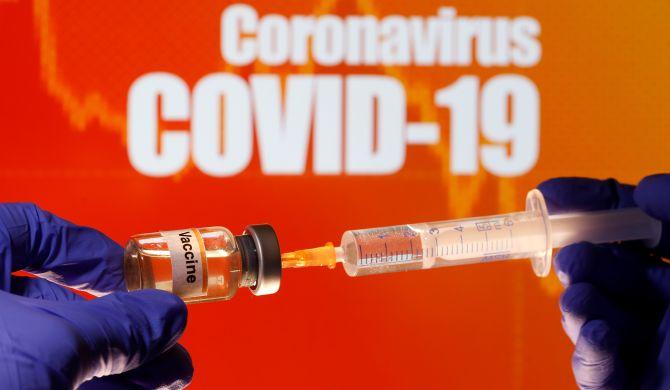 | « Back to article | Print this article |
History shows us that even effective vaccines could have unknown side effects that could develop over time, warns former Cabinet Secetary K M Chandrasekhar.

On July 2, the Indian Council of Medical Research sprang a surprise.
In a letter to officials at 12 hospitals in the country on preliminary tests on a COVID-19 vaccine developed by Bharat Biotech International, the director general said, 'It is envisaged to launch the vaccine latest by 15 August 2020, after completion of all clinical trials.'
'BBIL is working expeditiously to meet the target, however, final outcome will depend on the cooperation of all clinical trial sites involved in the project.'
The letter, which did the rounds on social media, also carried a threat in its last sentence.
'Kindly note that non-compliance will be viewed very seriously. Therefore, you are advised to treat the project on highest priority and meet the given timelines without any lapse.'
The reaction from the medical community and researchers with experience in the field was, as expected, so strong that the ICMR clarified that all that is intended is hastening of procedures and eliminating red tape.
The reference to 'launching' of the vaccine perhaps did not mean that the vaccine would be available for use.
India is not the first to try to speed up the roll-out of vaccines.
Writing in The Washington Post on May 1, 2020, Michael J Rosenwald talked of the US federal government's 'Operation Warp Speed', launched to produce a COVID-19 vaccine by January 2021 -- 'months ahead of standard vaccine timelines'.
Rosenwald went on to say, 'The last time the government tried that, it was a total fiasco.' He was referring to the swine flu vaccination programme launched by US President Gerald Ford's administration in 1976.

In February 1976, it was found that there were two isolates of virus from samples collected from recruits in Fort Dix, sent to the Centres for Disease Control, which seemed to resemble the virus strains of the 1918 Spanish flu pandemic.
This created much alarm in health circles, accentuated also by the fact that there was an expectation that a pandemic was round the corner, having held off for so many decades.
In an election year, this possibility created even more fear. On March 10, 1976, the US advisory committee on immunisation practices concluded that a pandemic was possible and recommended the launch of an immunisation programme.
The director of the CDC went one step further and recommended mass immunisation.
President Ford convened a meeting of eminent scientists including Dr Jonas Salk (of the polio vaccine fame) and Dr Albert Sabin. Thus was conceived the US national immunisation programme.
Four committees of the US congress on appropriations approved the programme and the required appropriations bill was approved and signed.
The programme was launched on March 24, 1976 by Ford, who said, 'Let me state clearly at this time no one knows exactly how serious this threat could be. Nevertheless, we cannot afford to take a chance with the health of the nation.'
At this time, a suggestion that there should be some mode of compensation against claims of adverse reaction was dismissed by the US surgeon general's office, but this did become an issue later when vaccine manufacturers sought protection against possible litigation.
Ford, however, was unfazed. His plan was to inoculate a million a day by the winter of 1976.
The national influenza immunisation programme unit was established in the CDC and mass immunisation was to be conducted by the federal government and the states jointly.
Vaccine manufacturers were ready with the vaccine by October 1976 and, in the first 10 weeks, 45 million were inoculated.
Then disaster struck.
It was seen that a small proportion of those inoculated, reportedly one in 100,000, developed a neurological disorder called the Guillain-Barre Syndrome.
This disorder affects the peripheral nerve system and, starting with pricking and tingling sensations and muscle weakness, could lead ultimately to breathing difficulties and paralysis.
As in the case of COVID-19, where a 'cytokine storm' could take the life of a young and strong patient, it is the result of an autoimmune reaction that affects the nerves.
By December 1976, there were 94 reports of paralysis and the entire programme was shut down on December 16.
The inevitable allegations of a programme launched for political advantage started.
On December 20, 1976, The New York Times, attributed the 'swine flu fiasco' to 'the self interest of government health bureaucracy'.
The failure of the vaccination programme -- and, even more, the failure of the pandemic to show up -- had long-term consequences in the US.
As Rebecca Kreston wrote in Discover magazine on September 30, 2013, 'Some of the American public's hesitation to embrace vaccines -- the flu vaccine in particular -- can be attributed to the long lasting effects of a failed political campaign to mass-vaccinate the public against a strain of the swine flu virus.'
'The government-led campaign was widely viewed as a debacle and put an irreparable dent in future public health initiatives, as well as negatively influenced the public's perception of both the flu and the flu shot in this country,' Kreston noted.
The 1976 episode was not an isolated one. In 1955, Cutter Laboratories had produced some batches of the polio vaccine which contained the live virus. Some 40,000 children got 'abortive'; polio with mild symptoms, 51 were paralysed and five died.
From 1955 to 1963, SV 40, a simian virus from monkey cell cultures used to make polio vaccines, was found contaminated.
In 1998-1999, the rotavirus vaccine for rotavirus gastroenteritis in infants was found to cause a kind of bowel obstruction and had to be withdrawn.
In 2007, 1.2 million doses of a vaccine for Hib, a type of flu, had to be recalled for fear of contamination.
The present vaccine development is not quite the same as the failed vaccination programme in the US in 1976.
The earlier episode related to a flu that never became a pandemic, while the present one is raging across continents and we are racing against time.
Yet, history shows us that even effective vaccines could have unknown side effects that could develop over time.
Hence, as in all human endeavour, discretion is the better part of valour.